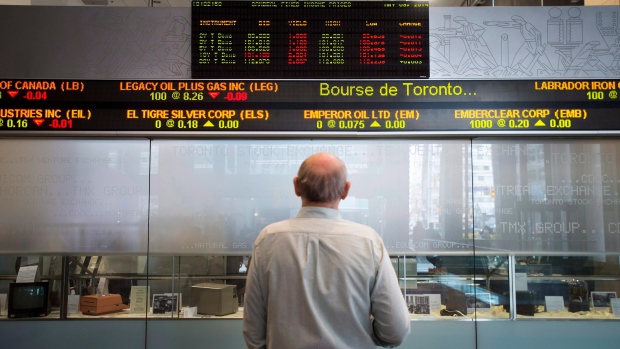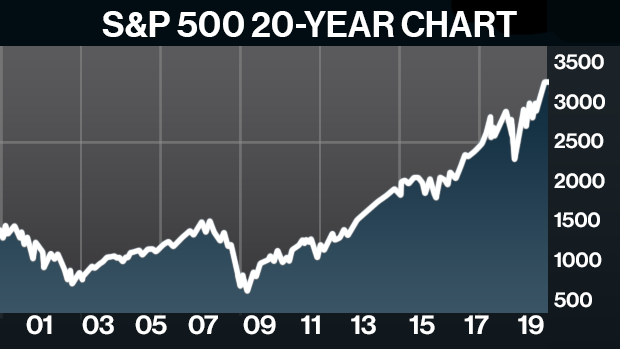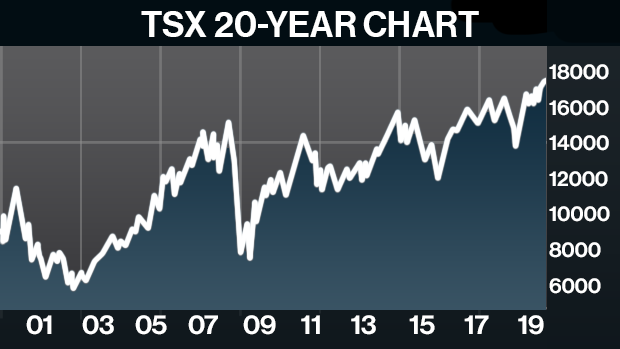Jan 17, 2020
Avoiding the stock market will likely hinder your retirement goals
By Dale Jackson

News that stock markets are hitting new highs isn’t news at all. They’ve been hitting new highs for over a decade and before that they hit new highs. Over the long-term, they have always gone up.
All those highs can be problematic for long-term investors adhering to the ‘buy low, sell high’ principle, and sitting on the sidelines waiting for the next big market correction. Keeping a large chunk of savings in cash or fixed income is not an option for most Canadians who want to retire comfortably. Cash generates close to zero returns over time and two per cent is a stretch for safe, fixed-income investments like bonds.
Most retirement plans are based on an assumption that equity returns in the upper single digits will compound over time. That won’t happen for investors waiting for the lows to be low enough.
Being skittish about putting your retirement savings at risk is perfectly natural. Psychologists consider it a behavioural bias called loss aversion. Deep in the back of our minds, the pain of losing money is disproportionately stronger than the pleasure from gaining it, putting fear ahead of reason.
A recent study on loss aversion by Sun Life Financial attempted to quantify this bias in terms of dollars, by asking people how much they would need to gain in relation to the amount they would risk losing. The study found most respondents would not risk losing $100 if the potential gain was only $100. More agreed to take the risk as the potential gain increased. It found most investors would only risk the $100 if the potential gain was doubled.
Much of today’s loss-aversion sentiment could be rooted in the global market meltdown of 2008, which can also serve as a worst-case scenario since it was the worst financial collapse since the Great Depression of the 1930s. In both cases, losses were devastating, but markets eventually recovered and investors who overcame their fear and held steady recouped their losses.
Long-term charts of the benchmark S&P 500 and S&P/TSX composite index show steady gains in the decades before 2008. The S&P 500 lost half its value between October 2007 when the meltdown began and its March 2009 bottom. By October 2013, the S&P 500 topped its pre-meltdown high and has since doubled from there – as if the meltdown never even happened.
The plunge was much quicker and the recovery much slower for the TSX, which lost nearly half its value between June 2008 and February 2009. It wasn’t until June 2014 that the TSX topped its pre-meltdown high. It has since rallied an additional 20 per cent.


That’s not to say the next big correction won’t be tomorrow, but it’s a fact of life that most of us need to invest to retire comfortably and getting there usually requires taking a leap of faith in the equity markets. As the mandatory investment industry disclaimer says: “past returns are not an indication of future performance.” Investors cannot control the broader markets but there are hedging strategies that can help cushion the blows and outpace the highs, which are outlined below.
- Dollar cost averaging: Making regular contributions over time smooths out entry points in fluctuating markets. It allows investors to buy into stocks as they rise, and buy stocks that are down at a discount.
- Income-generating investments: Two per cent isn’t much of a return for fixed-income investments like bonds, but it does generate reliable returns in times of stock market volatility. Portfolios should have a fixed-income component that grows proportionally as the investor nears retirement and needs to withdraw cash. Stocks that pay reliable dividends are also a good source of income regardless of equity market conditions.
- Diversification: Spreading your equity investments among sectors and geographic regions can limit risk and open up your portfolio to opportunity. We often tend to look at stock markets as a whole but there are a lot of parts that move in different directions.
- Buying the best of the best: Most stocks get swept up in market advances and declines but the best ones tend to lose less on the downside and gain more on the upside. Finding the best stocks means doing your homework, getting professional investment advice – or both.
Payback Time is a weekly column by personal finance columnist Dale Jackson about how to prepare your finances for retirement. Have a question you want answered? Email dalejackson.paybacktime@gmail.com.




